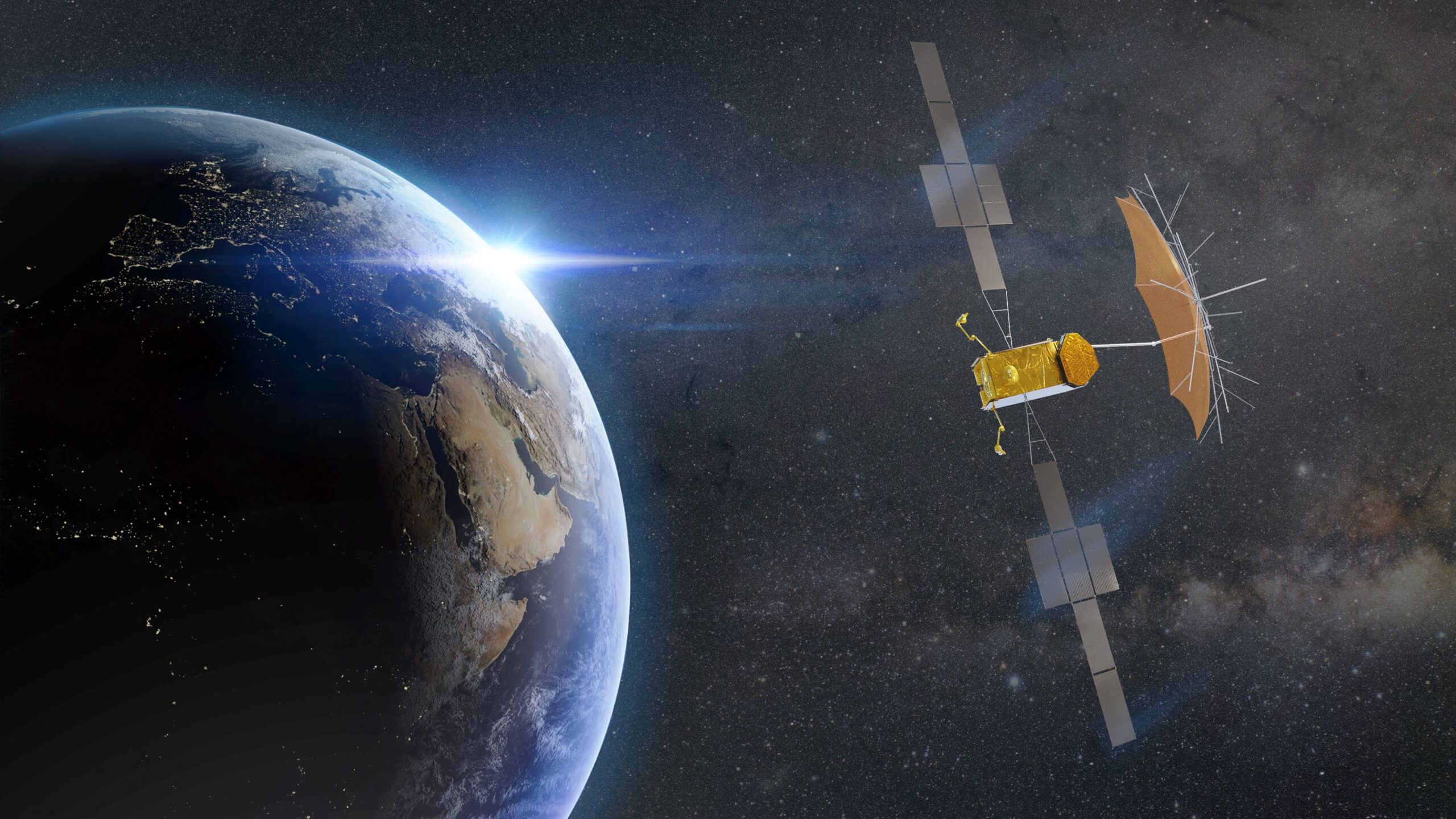WASHINGTON — Emirati fleet operator Yahsat on Aug. 27 announced a contract with Airbus Defence and Space to build a satellite for its Thuraya mobile voice and data connectivity subsidiary, beginning a long-awaited refresh of its L-band network.
The contract covers a satellite designated Thuraya-4 NGS, and includes an option for a Thuraya-5 NGS satellite that, if exercised, would complete the replacement of Thuraya’s aging two-satellite fleet of Boeing-built spacecraft.
Yahsat Chief Executive Masood M. Sharif Mahmood said during a video call with reporters the company will spend around $500 million to build and launch the Thuraya-4 NGS satellite, refresh Thuraya’s ground network, and update its suite of mobile communications products.
The satellite will provide voice and data connectivity over the Middle East, Africa, Europe and Central Asia. Ali Al Hashemi, CEO of Thuraya and general manager of Yahsat’s Government Solutions division, said the company is seeking proposals for ground segment upgrades and a 2024 launch of Thuraya-4 NGS, an all-electric satellite expected to weigh several metric tons.
A decision on whether to exercise its Thuraya-5 NGS option will wait until Thuraya has a strong business plan in place for serving the Asia-Pacific market, both executives said.
Thuraya had announced plans in 2016 to develop a new geostationary satellite constellation called Futura, but the project stalled for want of financing. Yahsat, owned by the United Arab Emirates’ state-owned investment company Mubadala, acquired Thuraya in 2018, providing stable financial footing. Mahmood said Thuraya-4 NGS will be funded using Yahsat and Thuraya’s combined cash flow.
Yahsat operates a fleet of three satellites that provide broadband, television broadcast and other high-capacity C-, Ku- and Ka-band services to businesses and government agencies across the Middle East, Africa, Central and Southwest Asia and parts of South America. Thuraya’s two operational satellites provide telephony and low-data-rate L-band services to customers in Europe, the Middle East, Africa and the Asia-Pacific.
Thuraya 4-NGS will be built using an Airbus Eurostar Neo satellite platform, a 12-meter L-band antenna, and a payload processor that can adjust power levels for 250 communications beams, said François Gaullier, Airbus Defence and Space senior vice president of telecommunications satellite systems.
Mahmood said Thuraya-4 NGS will have significantly more capacity than Thuraya-2 and -3, allowing Thuraya to introduce more data-intensive connectivity applications, he said.
Yahsat will have a team of Emirati engineers shadowing Thuraya-4 NGS manufacturing at Airbus as part of a knowledge transfer program for the country, Mahmood said. Thuraya-4 NGS will weigh more than 5,000 kilograms and be built to last more than 15 years, according to Airbus.
No rush on Thuraya-5 NGS
Thuraya-4 NGS will replace the older of Thuraya’s two operational satellites, Thuraya-2, which launched in 2003 and is now five years past its 12-year design life. Thuraya-2 has enough fuel to remain in service until its replacement is in orbit in 2024, Mahmood said.
Thuraya’s other satellite, Thuraya-3, launched in 2008 and reached its 12-year service life earlier this year.
Geostationary operators often fly their satellites longer than their design life, and Thuraya is no exception. Mahmood said Thuraya-3 remains in good health and would be “extremely premature” to replace, regardless of age.
“We have an extensive amount of time ahead of us, and there is no reason to pull the trigger today on that [contract] option when in reality we have a completely functional system that is working and serving our markets,” he said.
Thuraya-3’s relative youth also buys Thuraya more time to assess the Asia-Pacific market, where Thuraya is seeing less demand for the kind of turnkey solutions it’s been able to sell in regions served by Thuraya-2.
“As for the [Asia-Pacific] … we’re still in the process to develop a business plan of how to capture market share there. The business philosophy in that region, [we are] finding, is totally different,” Hashemi said.
In Thuraya’s home market and neighboring regions, Hashemi said, “the focus was mostly on solutions, finding government solutions or solutions that would fit the needs of the customer, while in the [Asia-Pacific] region we found that having cheap devices, reliable cheap devices, or let’s say the volume of play, is more important.”
Hashemi and Mahmood said they are still open to Thuraya eventually becoming a global provider of L-band connectivity, like competitors Iridium and Inmarsat, but for the time being consider it more important to extract additional growth from markets in which Thuraya is already present.
Global coverage is a major benefit for aeronautical connectivity, but Thuraya is focused mainly on maritime, government and defense, Mahmood said, making it less important for the company.
Thuraya currently has around 250,000 active subscribers, down from 300,000 in 2018. Mahmood said Thuraya’s focus has tightened under Yahsat ownership to prioritize customer value over subscriber numbers. He declined to state Thuraya’s revenue.
